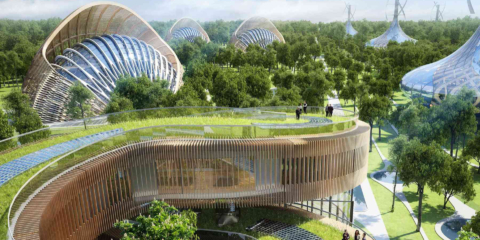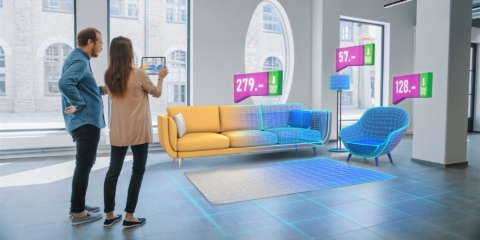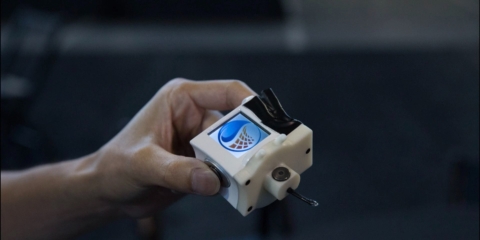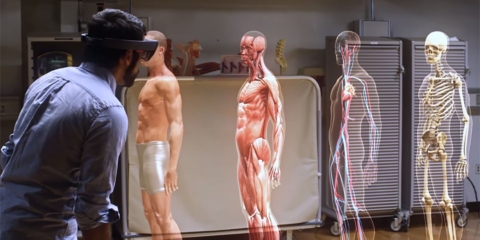Would you like to get notifications from Christian?
As anyone who's tried out a current-generation augmented reality headset will tell you, they're not exactly fashionable. But that could all change, thanks to a new chip from Qualcomm. The company has just announced the Snapdragon XR2, its latest AR platform, and it promises some impressive improvements over the existing XR1 chip—including support for 5G connectivity and eye-tracking.
But the XR2's form factor will really enable AR wearables to start becoming more fashion-forward. Thanks to its smaller size and lower power requirements, the XR2 will enable manufacturers to create AR glasses that are far more compact and stylish than anything we've seen before. Qualcomm says that the XR2 is "expected to enable up to 3x increase in processing power or up to 4x increase in graphics rendering" compared to the XR1.
Qualcomm's new Snapdragon XR2 chip could be a game-changer for augmented reality wearables. With its smaller form factor and lower power requirements, the XR2 will enable manufacturers to create AR glasses that are far more compact and stylish than anything we've seen before. In addition, the XR2's support for 5G connectivity and eye-tracking will pave the way for even more immersive and interactive AR experiences. As a result, we could see a new wave of sleek and stylish AR glasses hitting store shelves shortly—glasses that everyone will want to wear.
In practice, it should result in better image quality and potentially longer battery life in future VR headsets and make it easier for them to track real-world objects for augmented Reality applications. It also paves the way for slimmer headset designs thanks to the advances in display technology. So while we may not see unobtrusive eyeglasses with built-in displays anytime soon, Qualcomm's new development kit could be a big step in that direction—and ultimately make wearable AR much more practical and widespread than it is today.
Author: Christian Kromme
First Appeared On: Disruptive Inspiration Daily
Christian is a futurist and trendwatcher who speaks about the impact of exponential technologies like AI on organizations, people, and talents. Christian tailors his presentations to your audience's specific industries and needs.



Our world is changing at an exponential rate! A big tidal wave of digital transformation and disruption is coming at us fast. Many organizations see this wave as a threat and experience stress, but there are also organizations that just see this wave as an opportunity.

Imagine sitting with just 10-15 fellow executives at a premier location, gaining clarity on the impact of AI on your industry while enjoying an exquisite dining experience. These are not just meetings—they are transformative moments that will shape the future of your organization



In the future, 3D printing and generative design will allow for products to be designed in a more decentralized manner, and production will take place closer to the customer and fully on-demand. 3D printing technology will also allow for more customization and personalization of products.


The agricultural industry is ripe for disruption. Robotics, AI, and IoT are all technologies that have the potential to radically transform the way we grow food. In combination with vertical farming, these technologies could increase the efficiency and quality of agricultural products.

A human-centered society is one that puts people first and where technology is used to unite and empower people. It is a society that values biological life and dignity above all else. It is a society that recognizes the importance of human relationships and works to strengthen them. In a human-centered society, all members of the community are valued and treated with respect.


The future of healthcare is here. New technologies like AI, IoT, big data, and smart sensors make it possible to become the CEO of your own health. Imagine that your phone can listen to your voice and AI algorithms can detect small nuances in the tone of your voice that indicate specific diseases.
